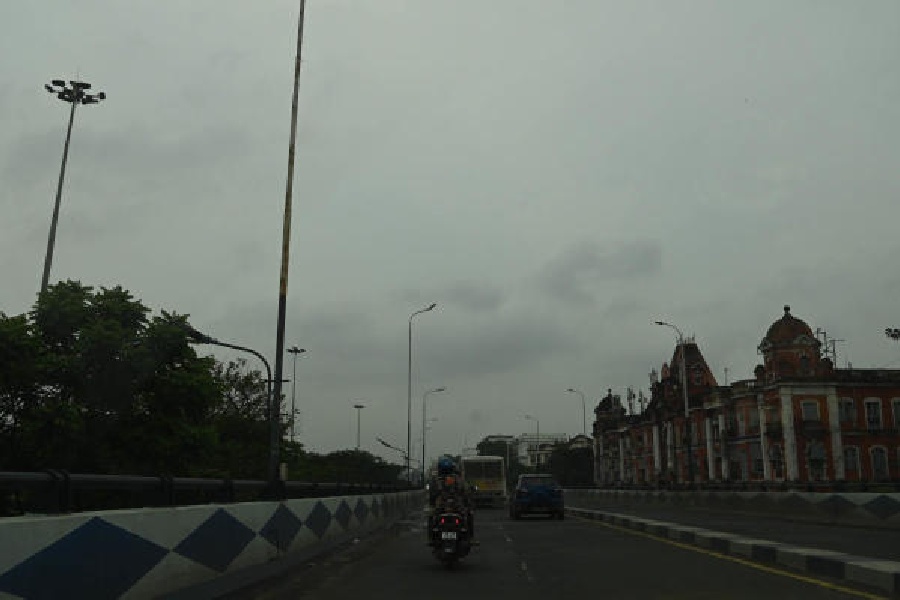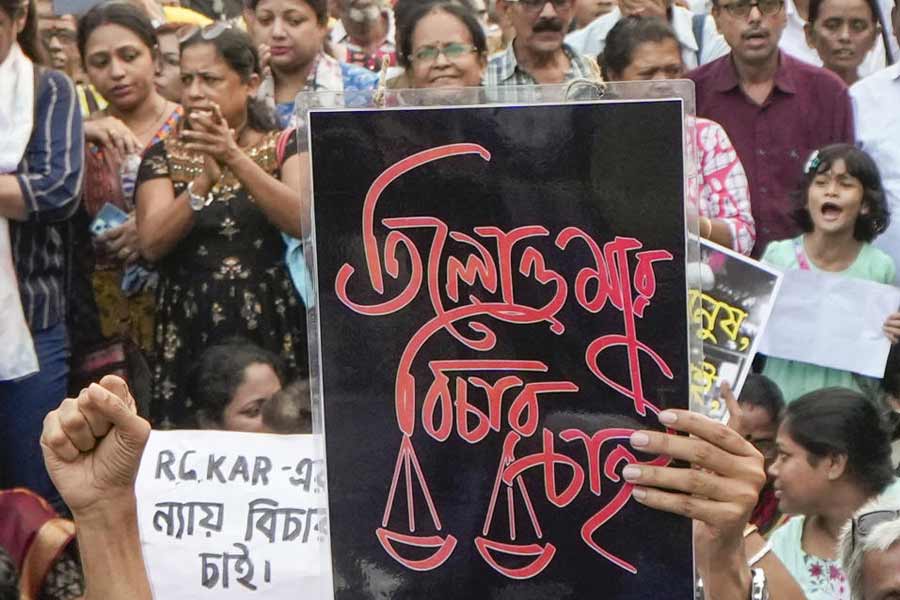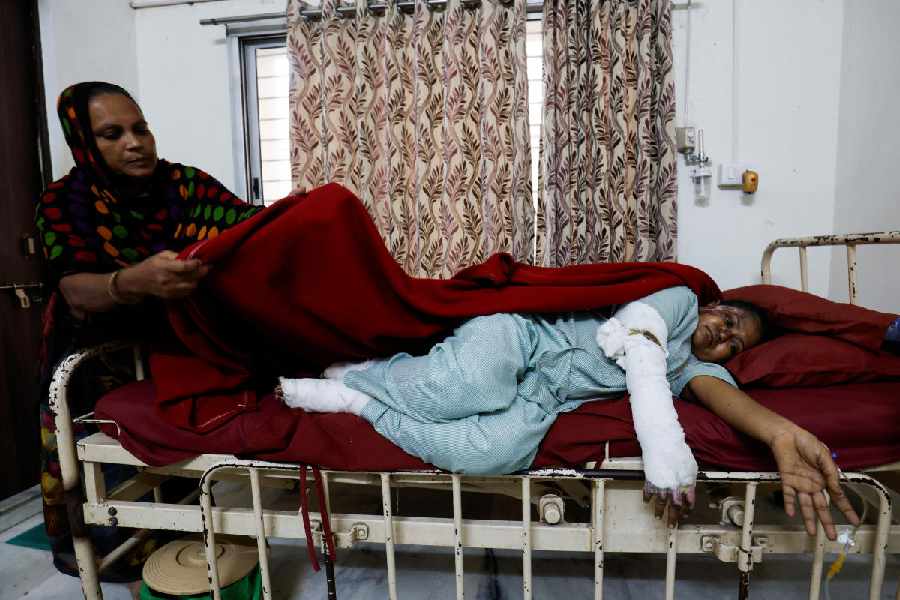 |
Gangtok, Oct. 18: A month has passed since the quake.
The BRO has managed to restore road connectivity to most far-flung areas of North district and the government has planned stricter building by-laws and the setting up of a state disaster relief force. Life is limping back to normal for most, but for others it has got stuck in relief camps.
Tara Jairu is one of them, a woman who is still fighting to come to terms with her displaced status at the relief camp in Paljor Stadium.
“We are staying here, as our house has been damaged. We don’t have anywhere to go,” said 45-year-old Jairu who has been staying at the camp with her three sons.
Two other families are also sharing the camp with the Jairus. The rest have moved off to their houses or taken up rented rooms.
The Jairus used to stay in a rented house at Sichey. But it was badly damaged when the 6.9 earthquake hit the state. Tara, a widow, has two school-going sons who are attending classes from the relief camp. Her eldest son, a 16-year-old, works with her as day labourer.
“My mother has been searching for rooms but has not been successful. We don’t know where we will go,” said 11-year-old Arjun, the second of Tara’s sons.
Nearly 1,150 people have been put up in the 53 relief camps set up across the state since the September 18 earthquake that killed 60 persons in Sikkim.
According to government norms, the relief camps had been set up for a maximum period of 60 days from the date of the earthquake. “But the stay at the camp can be extended and will be done on a monthly basis,” a government source said.
The government has also decided to frame stronger bylaws for building construction and set up a state disaster relief force to tackle natural calamities in future, said information and public relations secretary K.S. Topgay.
“The government has decided to set up a state disaster relief force to tackle natural calamities and to frame stronger bylaws for building construction,” said Topgay.
In a seismic zone like Gangtok, construction norms are often flouted and buildings are often taller than the restricted height of five storeys.
Last week, chief minister Pawan Chamling had said his government was considering restricting the height of buildings in urban areas to three-and-a-half storeys and to two-and-a-half storeys in rural areas. “We want to build a public opinion before taking this decision. This is my view but we also need to consult national experts on how high buildings can be in Sikkim,” Chamling had said.
A government press release today said a total of 53,172 houses had been damaged. Of them, 57 houses have been issued eviction orders. A dozen buildings have been issued demolition order.
A total of 642 government schools have suffered damage of various degrees but classes are continuing under temporary arrangements.
The release also said the government had requisitioned 510 prefabricated houses from the Union ministry of home affairs. Of them, 250 are for Chungthang and 200 for Mangan in North district, 10 for Ravangla in South and 50 houses for West Sikkim. Two houses have already reached North Sikkim and are set up at Mangan and Upper Dzongu.
So far over 300 sorties have been undertaken by the army and civilian helicopters in worst-hit North Sikkim, dropping relief material and transporting people. With the restoration of the North Sikkim highway, relief materials and movement of people are now possible by road.
Project Swastik of the Border Roads Organisation, which looks after road connectivity in the Himalayan state, had declared the North Sikkim highway up to Chungthang open for traffic on October 13. The 30km-long road between Chungthang and Mangan, the administrative headquarters of North Sikkim, had been snapped at multiple locations in the earthquake.
“The road to Chungthang from Mangan has been open for all types of vehicles since October 13. There is full movement along this road,” said Project Swastik chief engineer Brigadier Rajiv Sawhney.
During his visit to Sikkim after the quake, Prime Minister Manmohan Singh had given a deadline of October 15 to the BRO to restore the road from Mangan to Chungthang. He had stressed the strategic importance of the North Sikkim highway for army and paramilitary forces, which has installations along the border with China.
Brigadier Sawhney said the disrupted road link from Chungthang to Lachen has also been restored by the BRO. The road is clear right up to Guru Dongmar, he said. Guru Dongmar Lake is very close to the Indo-China border and is accessible through Lachen.
But the tourism destinations of Lachung and Yumthang Valley cannot be reached yet. “We are trying to open the road to Lachung from Chungthang by October 22,” said Sawhney. From Chungthung, the North Sikkim highway goes to Lachen. A different road links Chungthang to Lachung.










